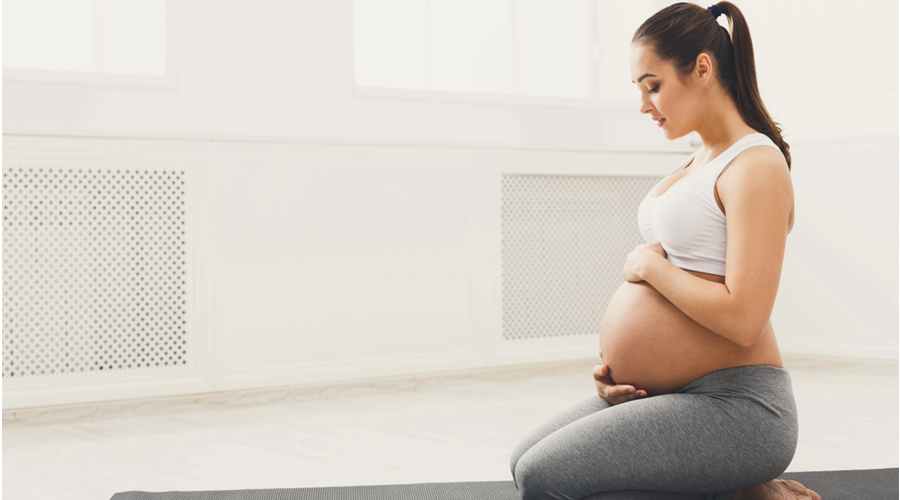Yoga & Pregnancy
The auspicious period of pregnancy brings itself with loads of excitement and fears. The mother-to-be and her family start to get peculiarly worried about her health. The expecting parents are bombarded with tons of advice, which may sometimes clash amongst each other, and the queries keep piling on. Pregnancy Yoga is a great resort for the expecting couple and the would-be mother.
Some of the general concerns that come with pregnancy Yoga may include –
1. Is it safe to practice Yoga while pregnant?
2. When to start pregnancy Yoga?
3. Yoga poses to avoid during pregnancy?
4. How does pregnancy Yoga contribute to normal pregnancy?
5. What is Parental Yoga?
6. Is it safe to start Yoga from the first trimester itself?
If these are the kind of queries running through your mind, then you have come to the right place. Let’s start this the Yogic way, take a deep breath in, count to five and now slowly let it out. As it is, Yoga is known for its soothing gentleness, which is exactly what an expecting mother needs throughout the period of her pregnancy. The pregnancy Yoga is curated so as taking into consideration the changing needs of the mother-to-be. Let’s clear one of the first worries, yes, it’s completely safe to practice Yoga during pregnancy. But, it’s particularly advised to be practiced under the supervision of a certified Yoga instructor.
When can expecting mothers start Yoga?
For someone who has never practiced Yoga previously, it’s advised, the second trimester, i.e. after about 14 weeks, is the perfect time for you to start Yoga, as you are not well accustomed to the postures. But if you are a regular Yoga practitioner, it’s completely okay for you to continue practicing it, but under the supervision and it’s essential you inform your instructor about your pregnancy, so as to skip some of the complicated asanas. Yoga is about stretching and not straining, so be aware of your body, and stop the instant you feel strain anywhere in your body.
Yoga poses to avoid during pregnancy?
Since it’s advised to practice Yoga under the supervision of a certified Yoga instructor during your pregnancy they will guide you through the asanas that are completely safe. But, in general, it’s advised to avoid postures that require twisting in more complicated angles, asanas that involve jumping and especially any asanas that require for you to lie on your stomach. Every pregnancy is different from each other, and so is everybody, so listen to your body, and don’t strain yourself. Exercise Yoga in an airy room, as overheating is common throughout pregnancy and stay hydrated.
How does pregnancy Yoga contribute to normal pregnancy?
Parental Yoga helps in both mental and physical aspects of pregnancy. Practicing parental Yoga, gives more control to women, the Pranayama channel your body with the mind, thus bringing some semblances and preparing women for their labour. Yoga also helps in bringing strength in areas where it’s most needed, lower back and legs. It helps in strengthening your muscles, like ‘Malasana’ assists in relaxing and opening up of your hips, tones your pelvic and hip muscles so that they won’t tense up during pressure. Our bodies follow a common pattern during stress i.e. “fear-tension-pain”, this gets even more excruciating during labour, practicing Yoga asanas and Pranayama will together help in aligning your mind and body relaxing it to a much better state and will allow the body to take charge of the labour.
It is also believed that Yoga can cut down the contraction period to two hours maximum. By allowing the pelvic bones and ligaments to open and move apart from each other, Yoga poses are known to also help in optimizing the baby’s position.
Practicing parental Yoga, assists in easing this thorough period of nine months which could have been more gruelling, if the expecting mother had thought otherwise. Some of the Yoga postures which are most known to help during pregnancy include, Talasana (though avoid going on toes), Yashtiksana, Parvatasana, Ushtrasana, Utkatasana with adequate support.
For better oxygenation and relaxing of your nervous system, Pranayama IV should be practiced during the first and second trimester. Yogendra Pranayama I, II and Anuloma-Viloma are also highly relaxing and can be performed throughout the period.
Sukhasana, Vajrasana, Bhadrasana (sitting and lying down) are great meditative postures, Uttanasana (leg raised to the wall) is great for better blood circulation. Makarasana and Shavasana in early pregnancy are very useful. Dhradhasana can be practiced until the last day of pregnancy as a relaxation technique.
The Institute pioneered techniques like Nishpanda Bhava, Pratipaksh Bhava, and Anitya Bhava which help to shape the attitudinal tendencies and allay the fears and anxiety one experiences during pregnancy.

